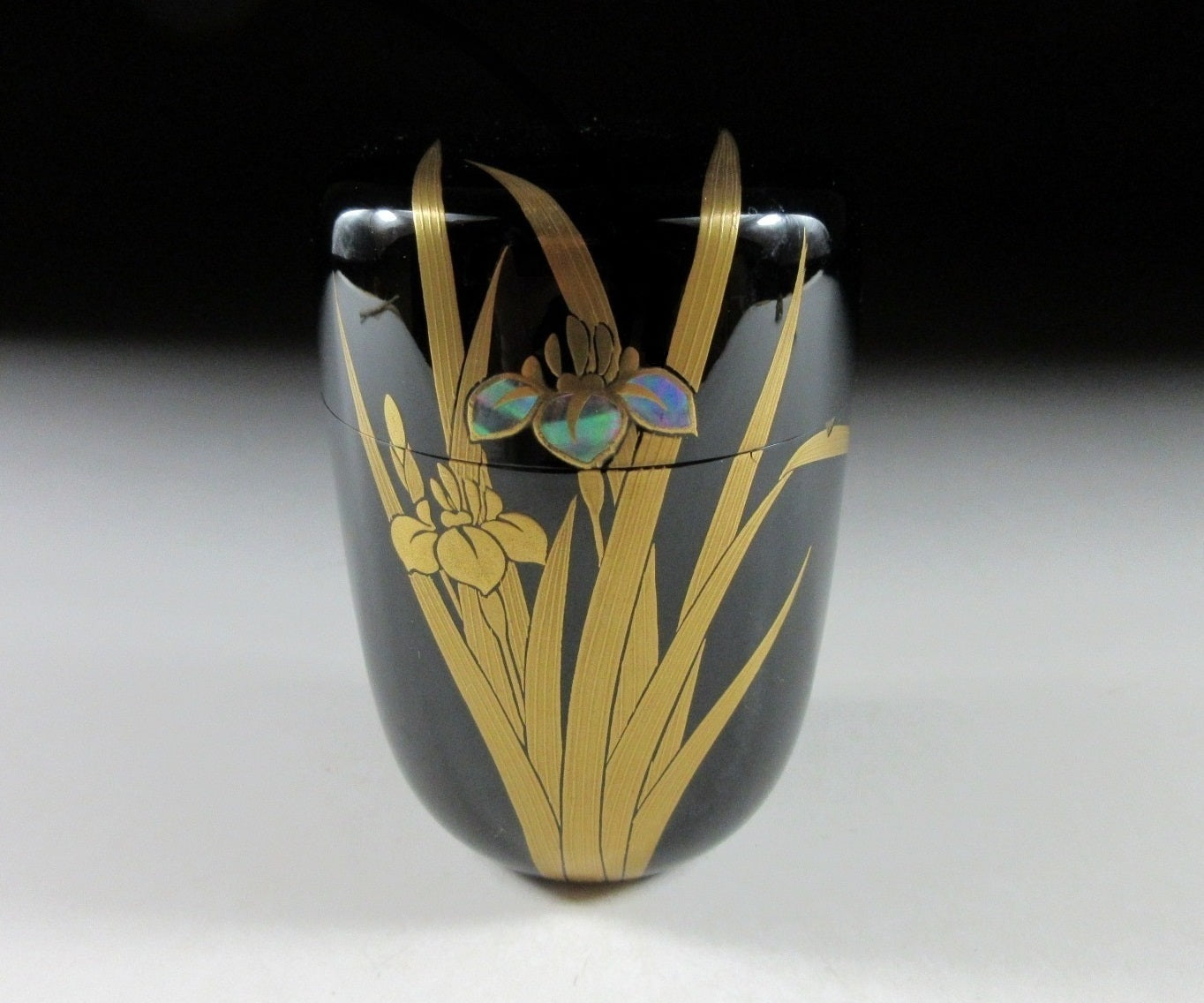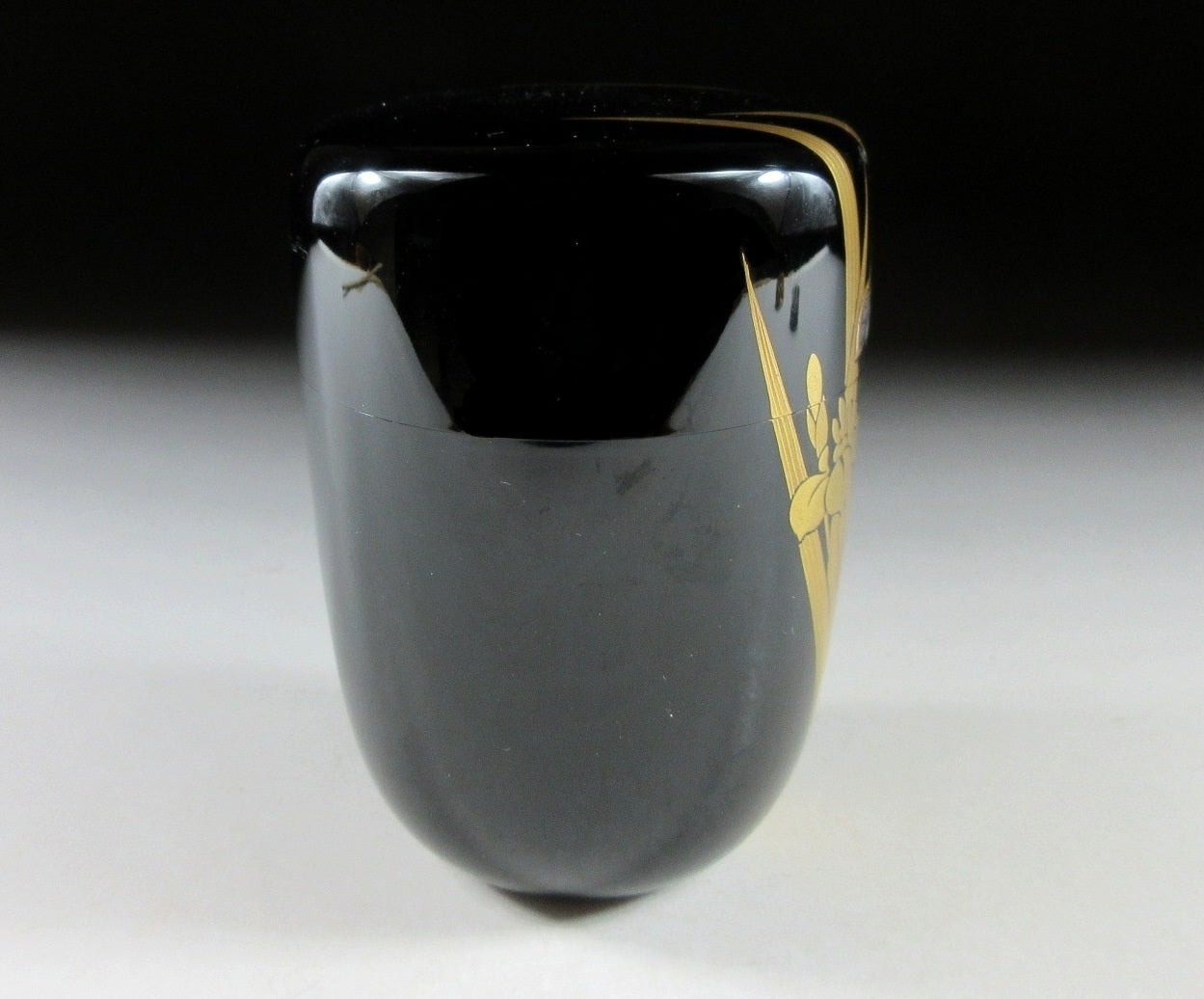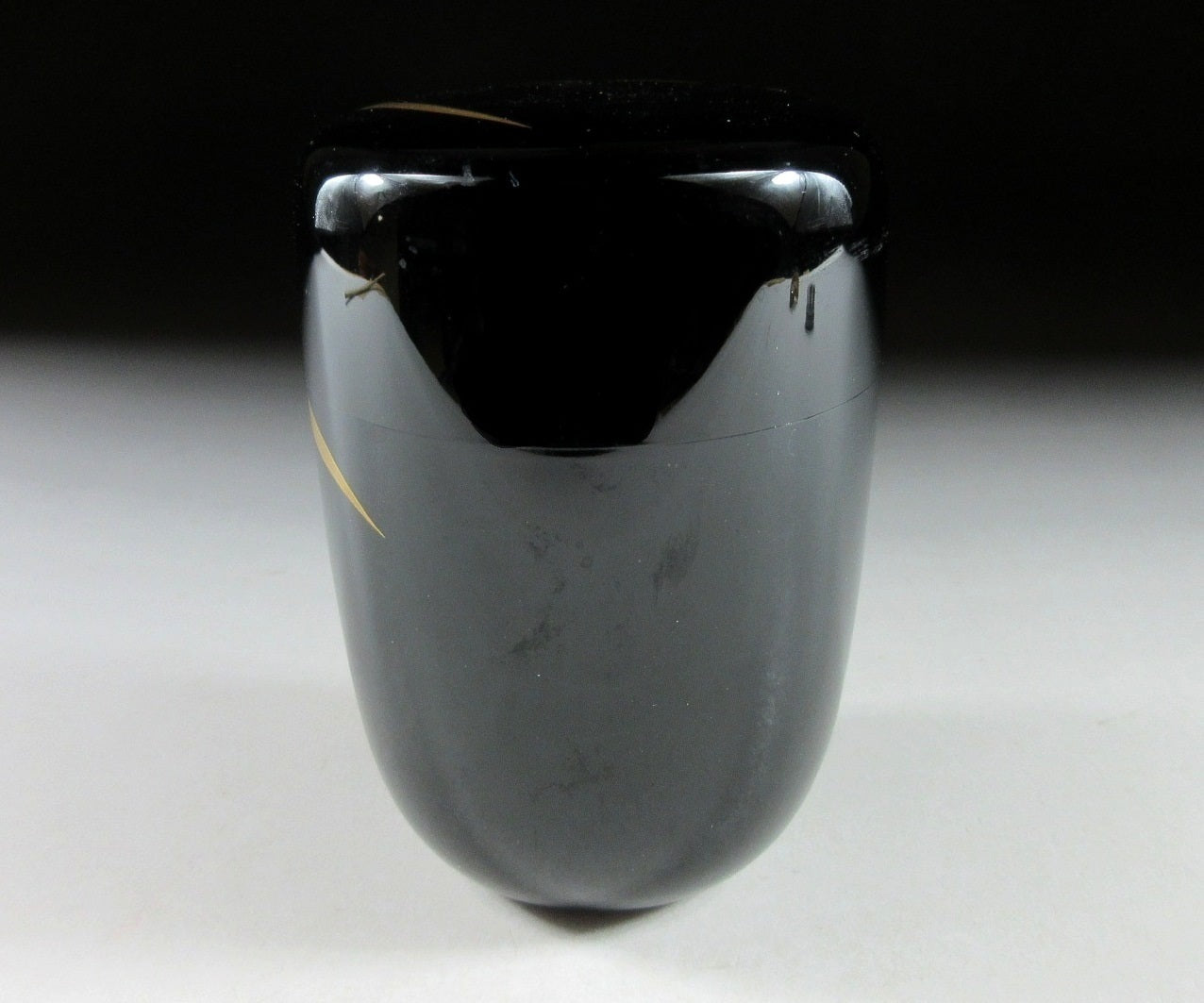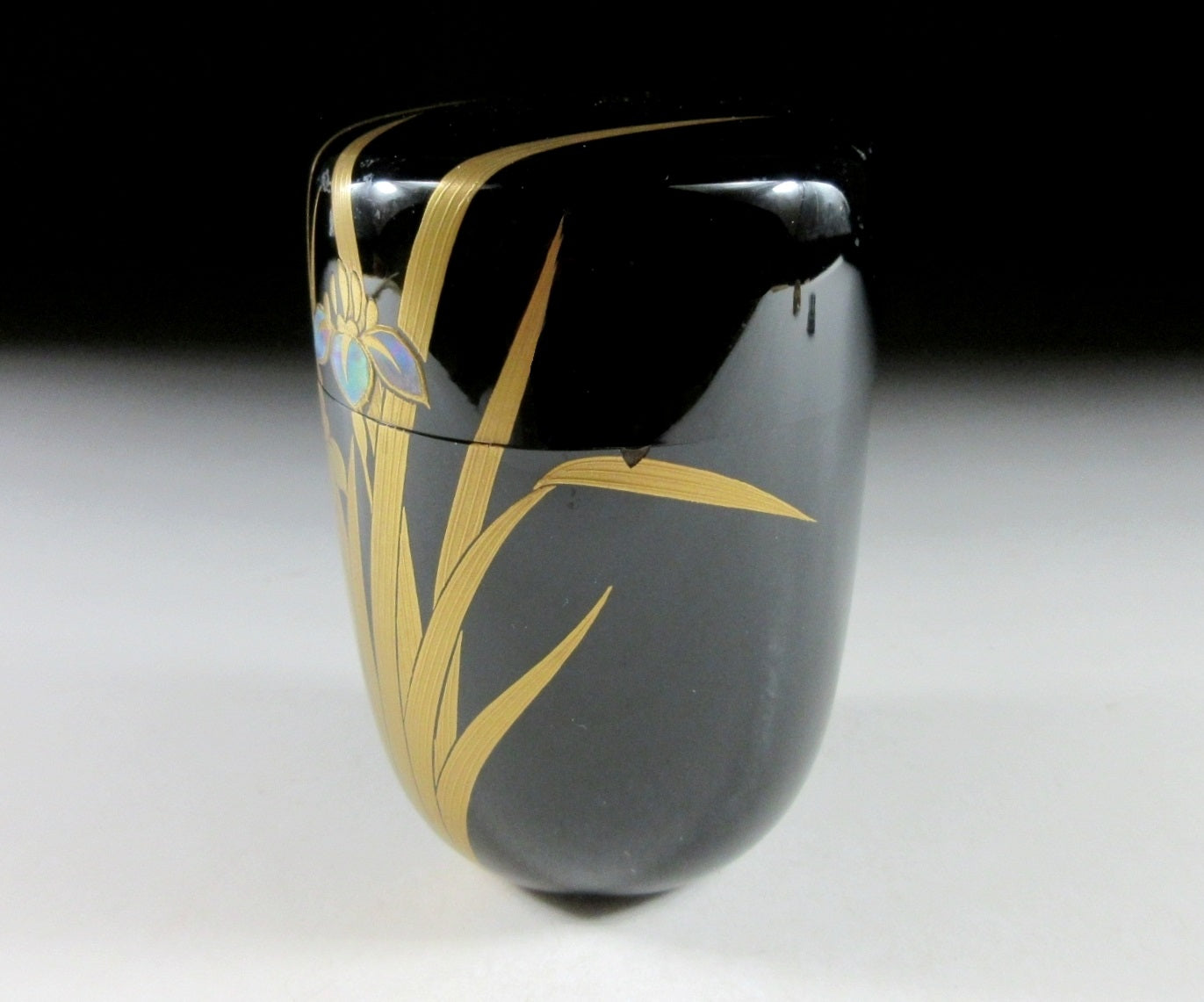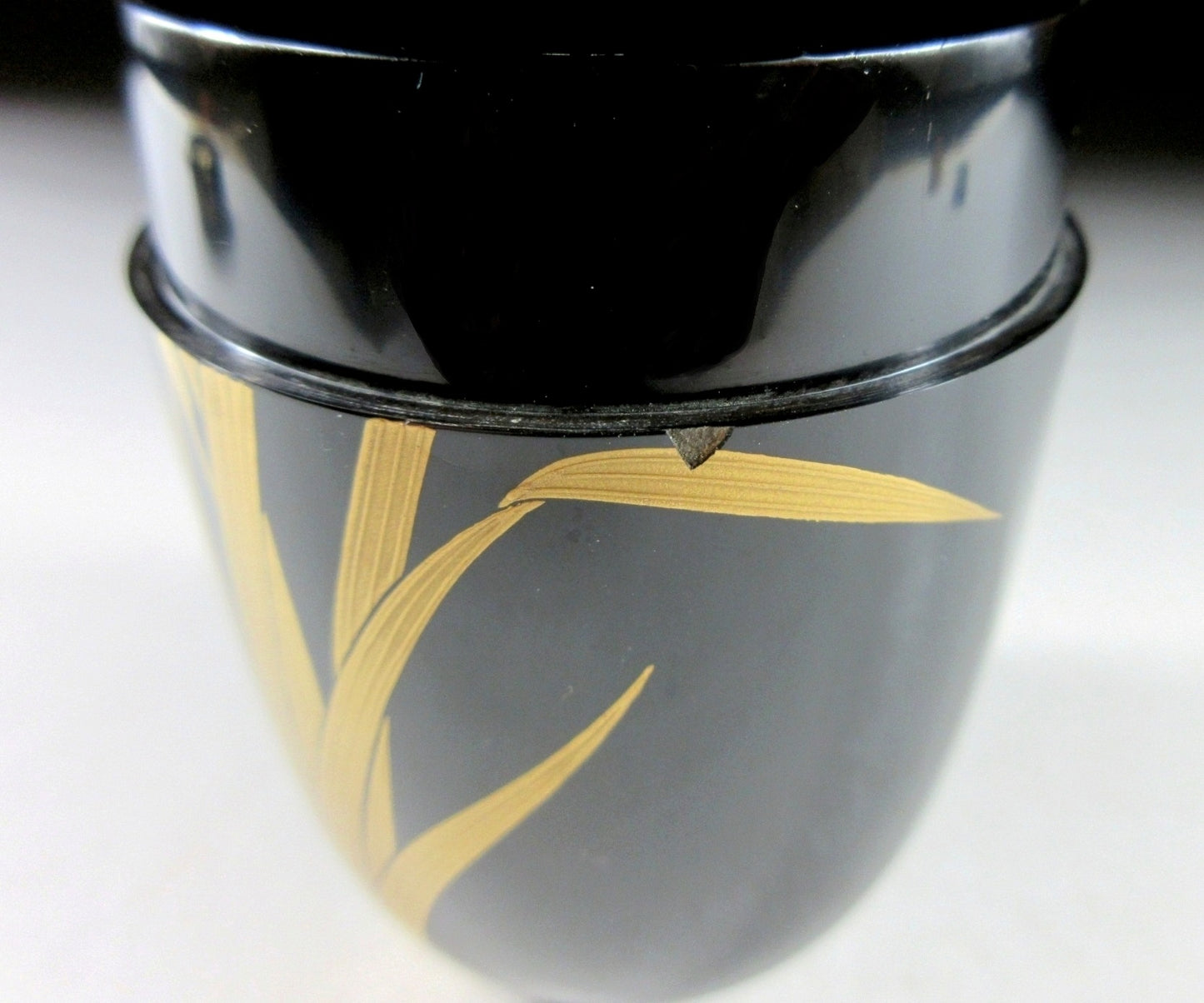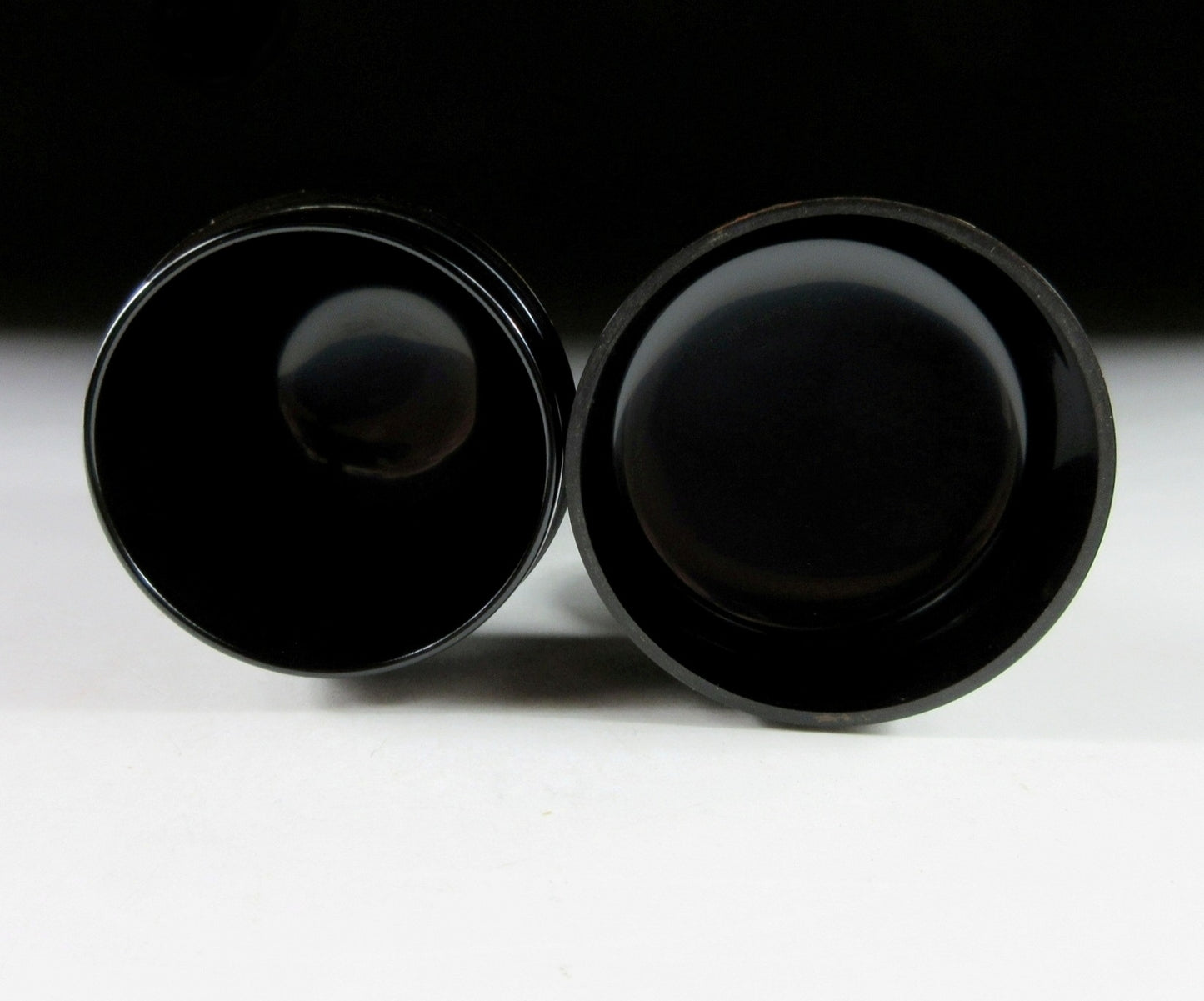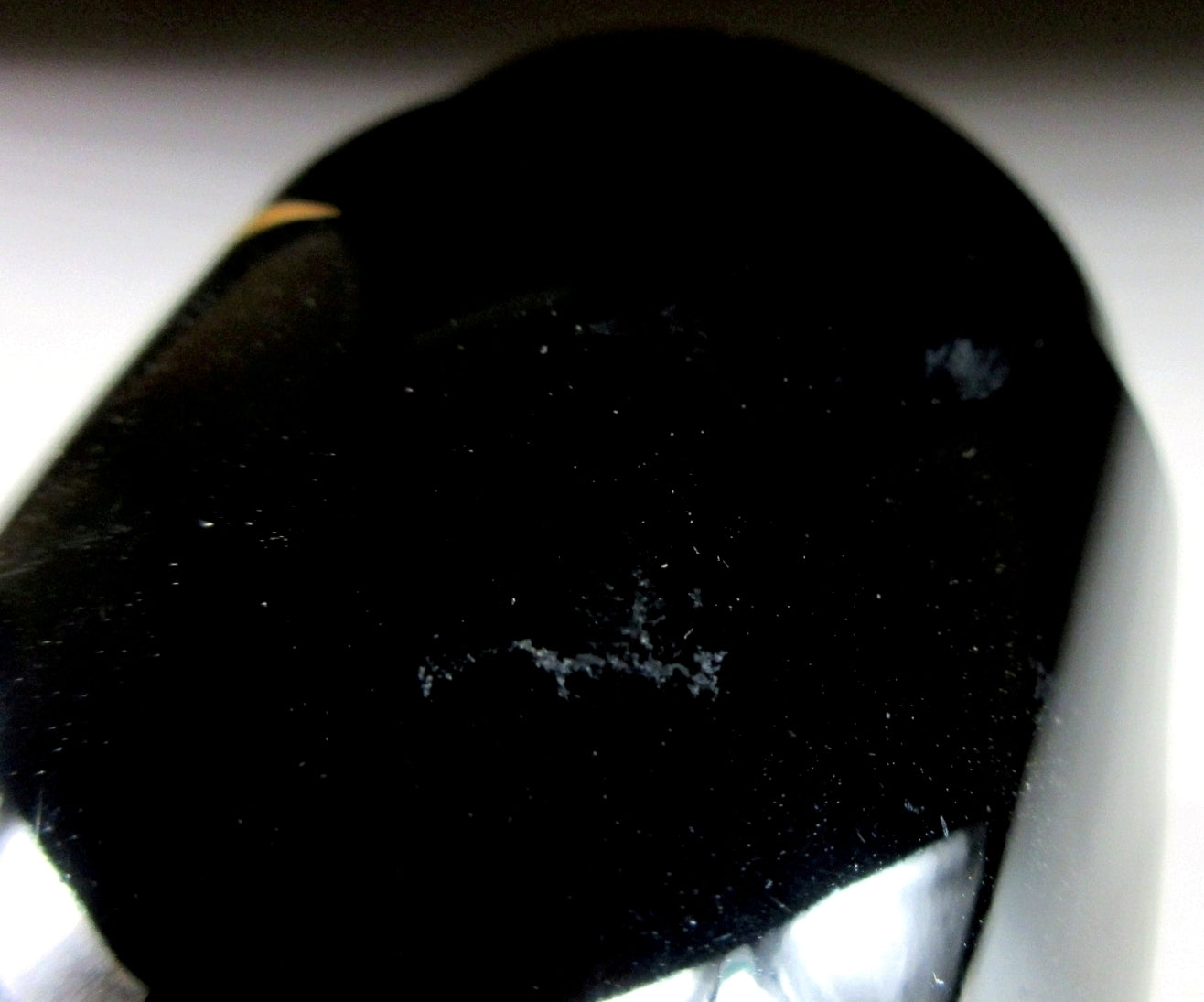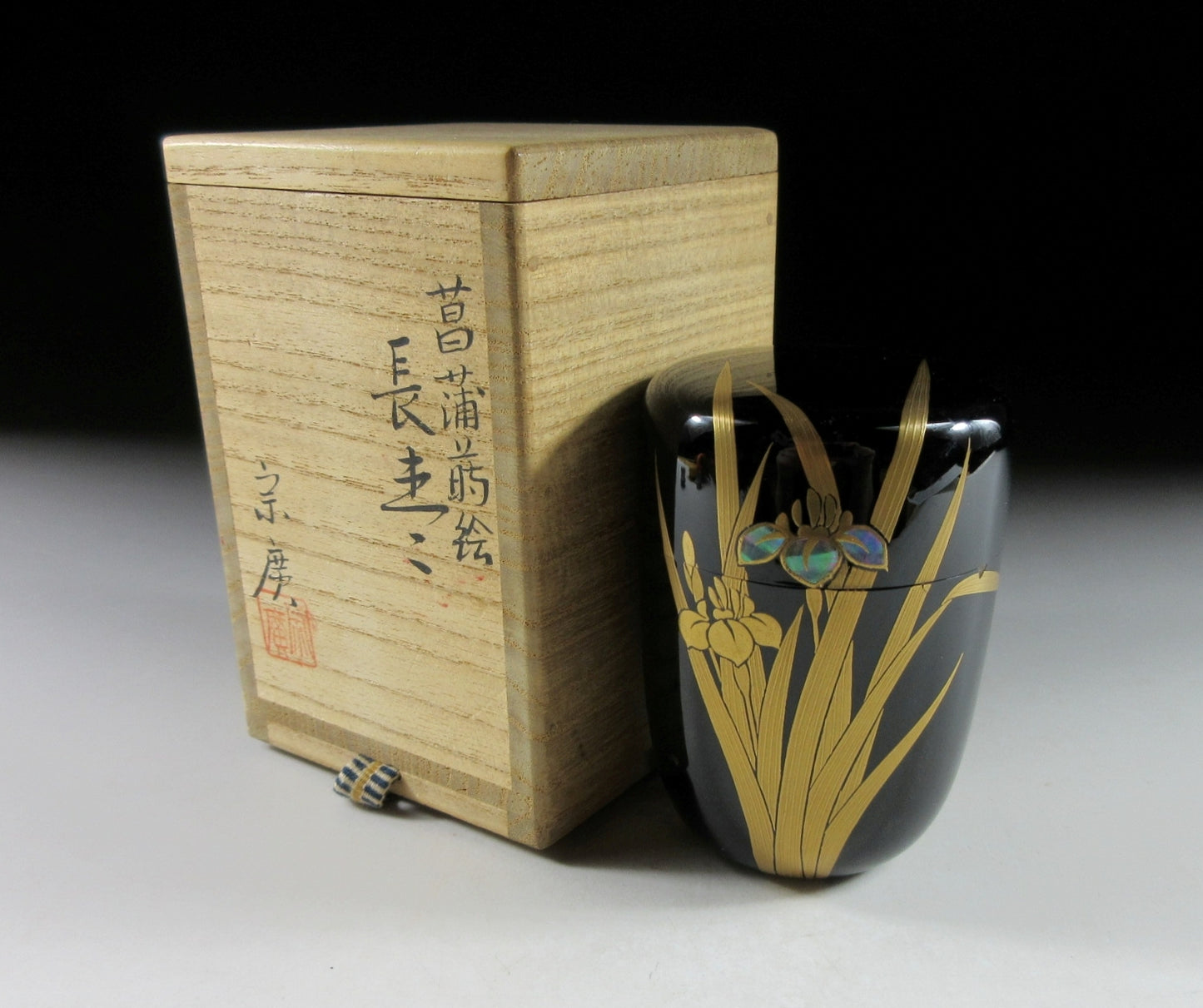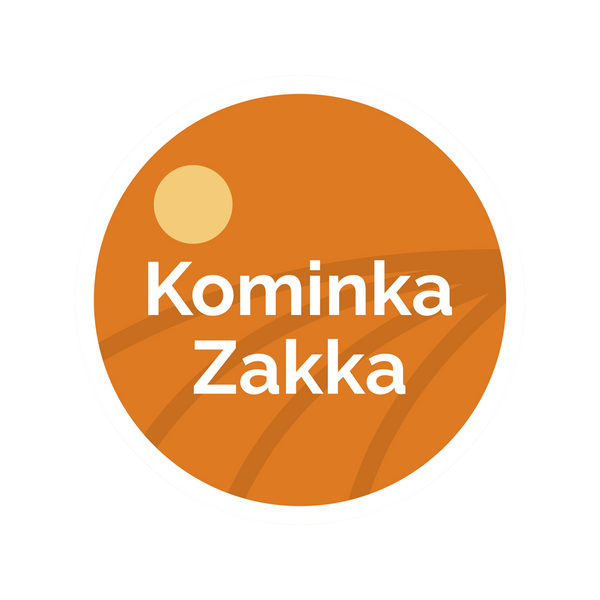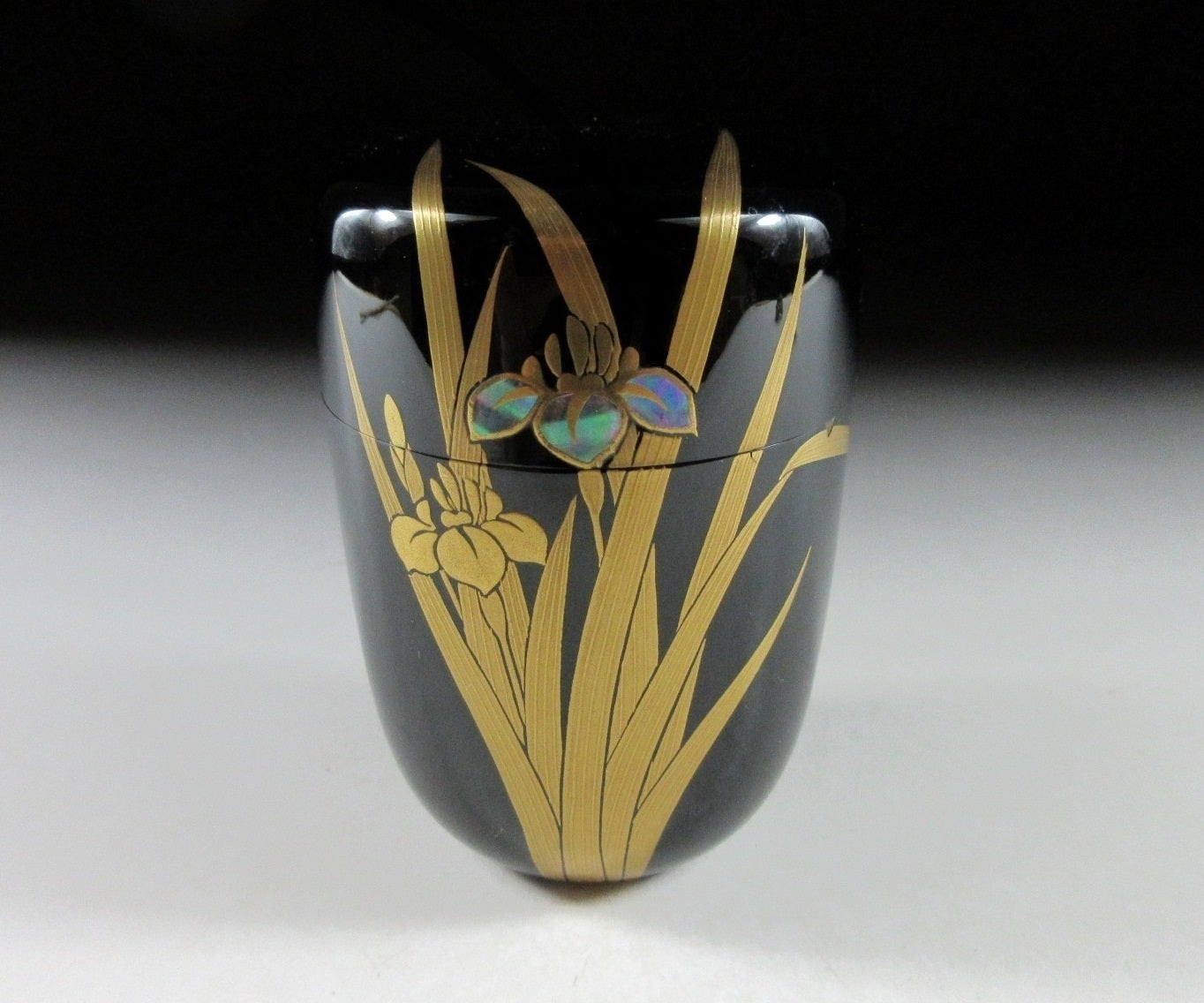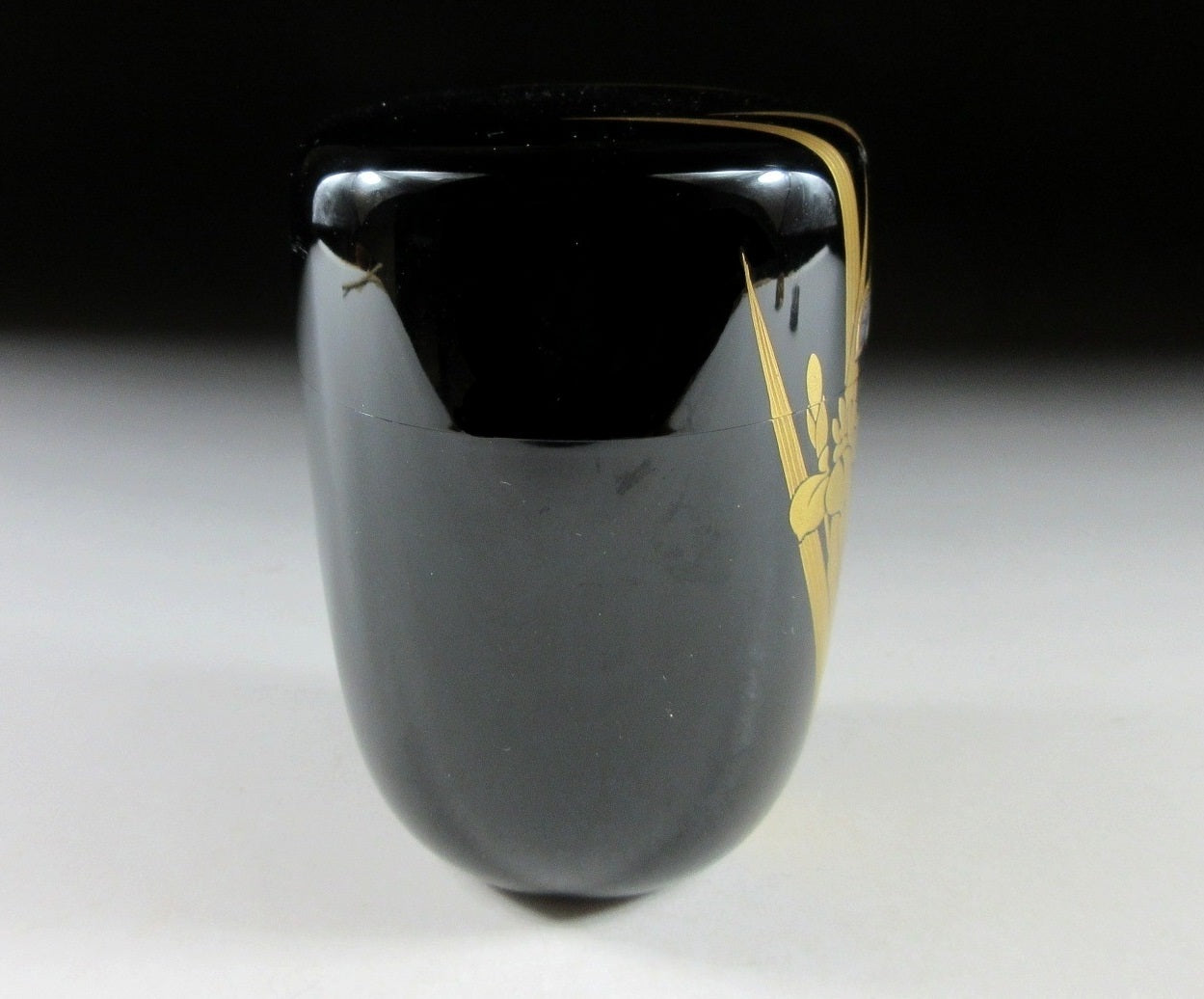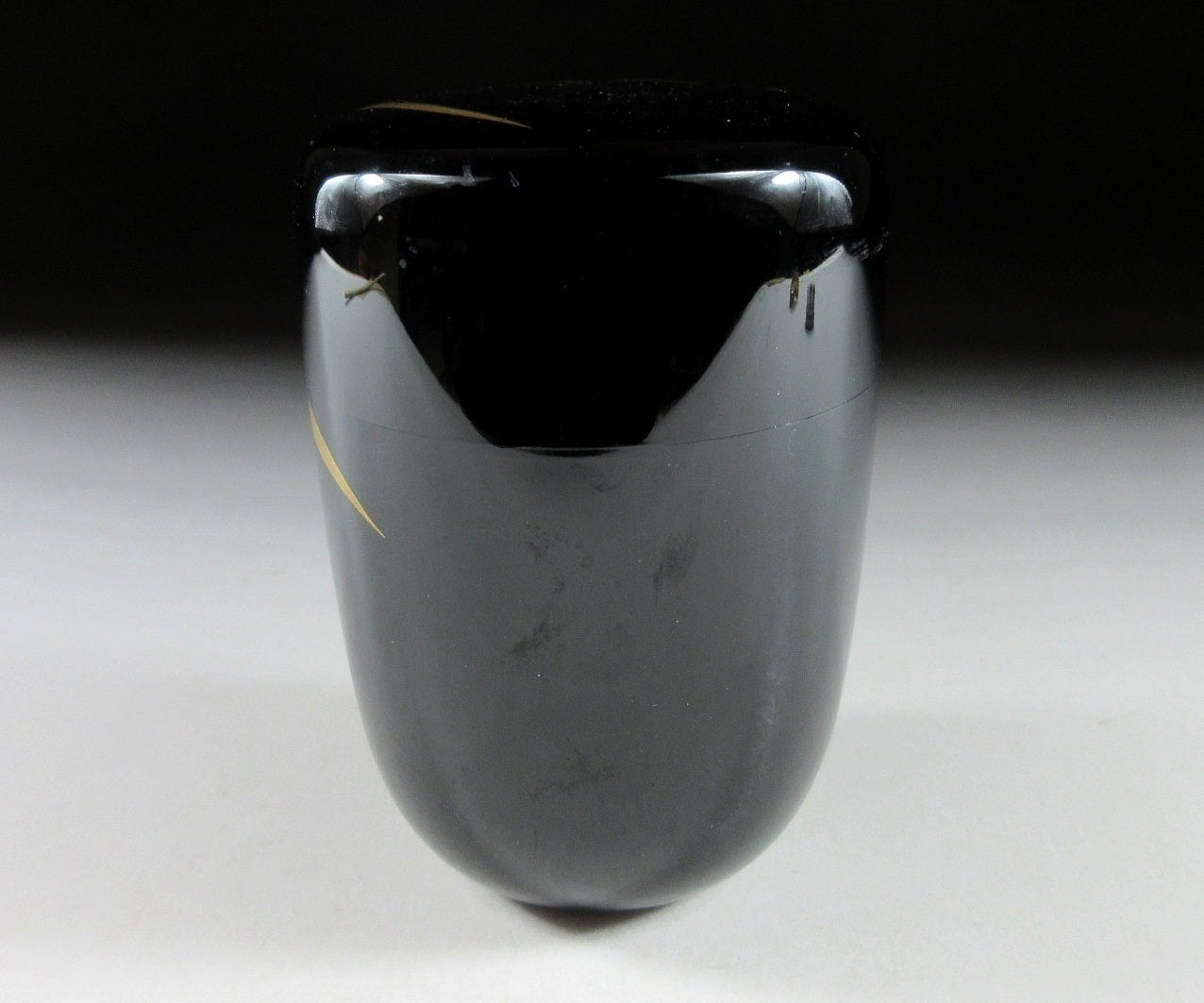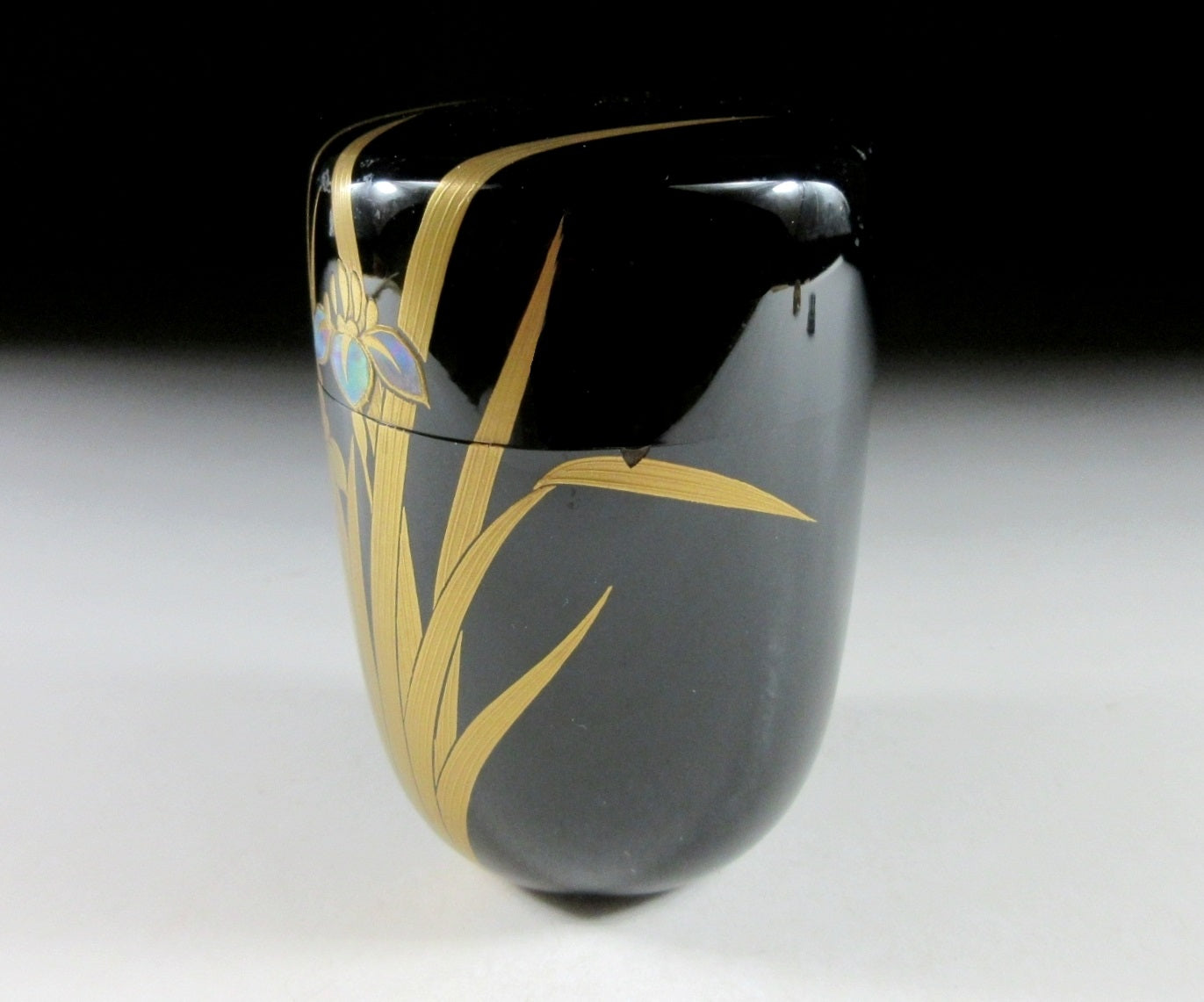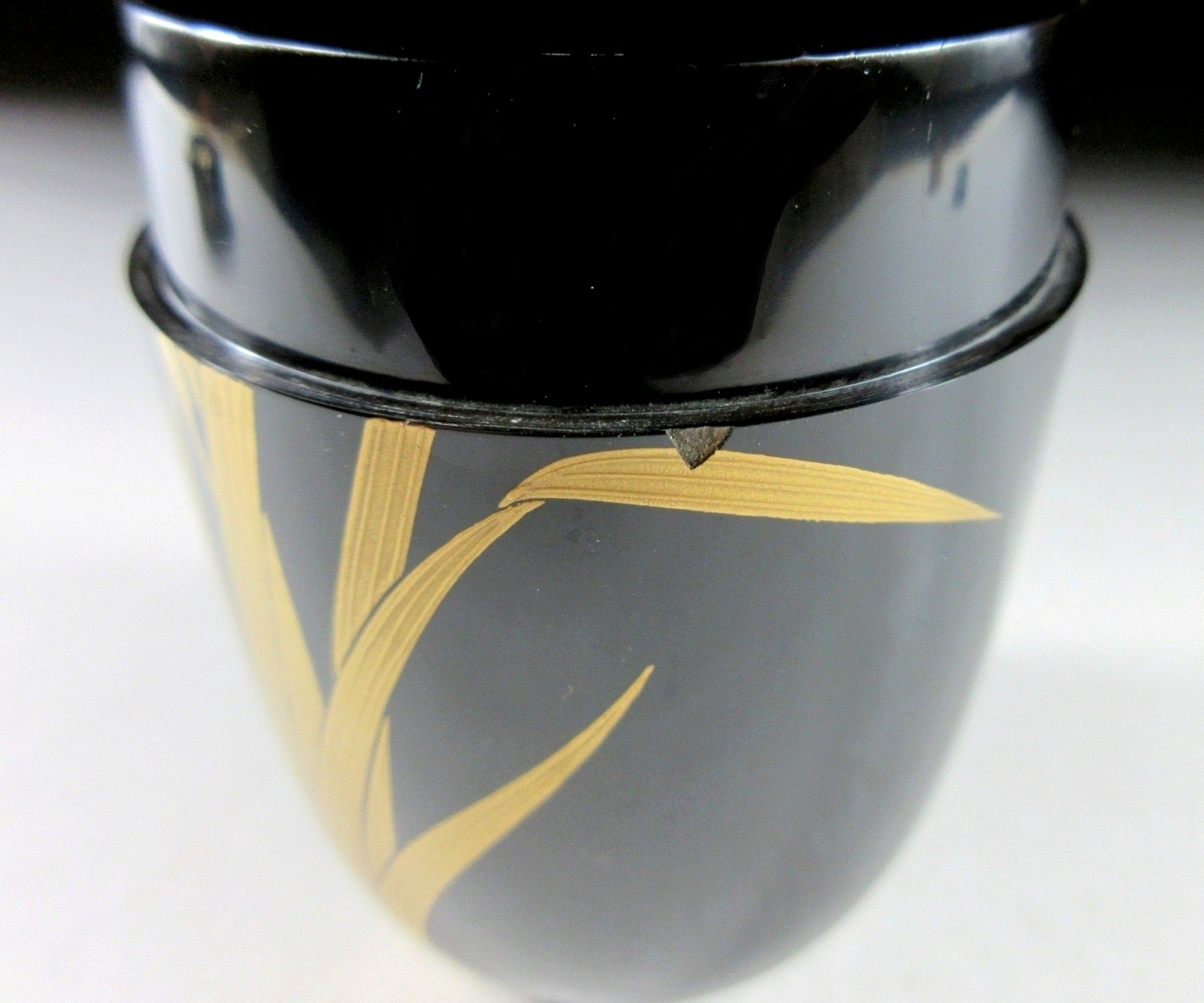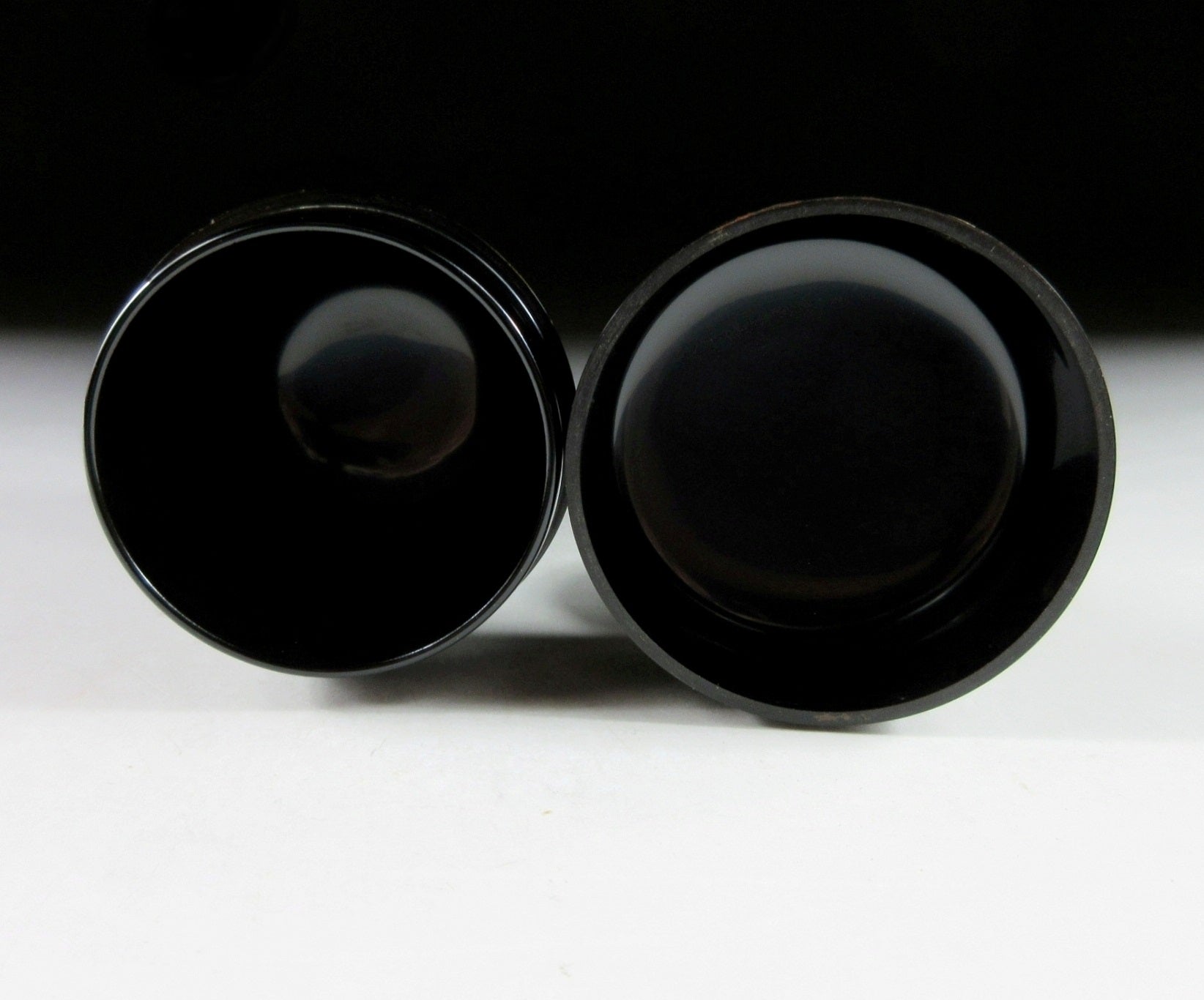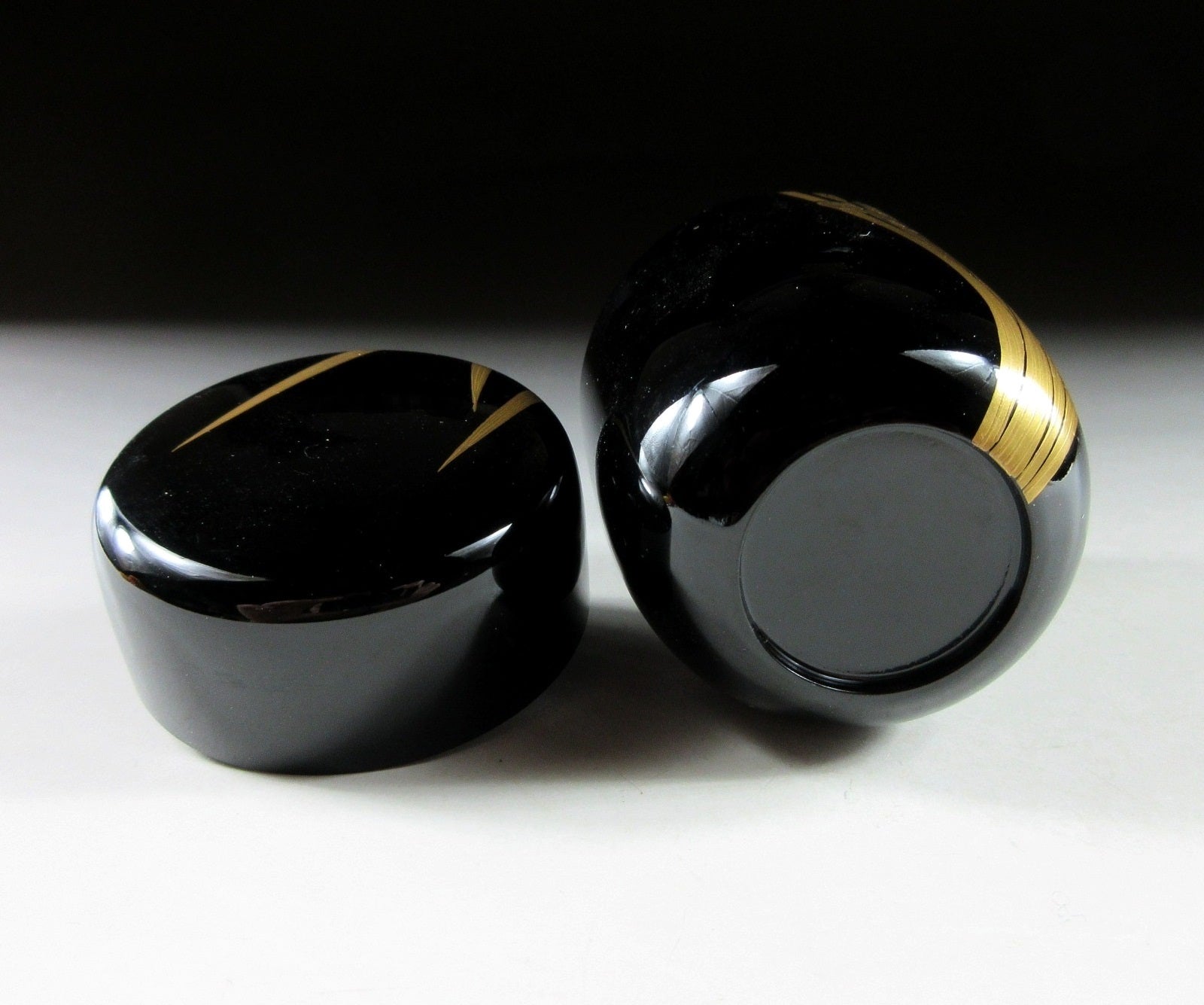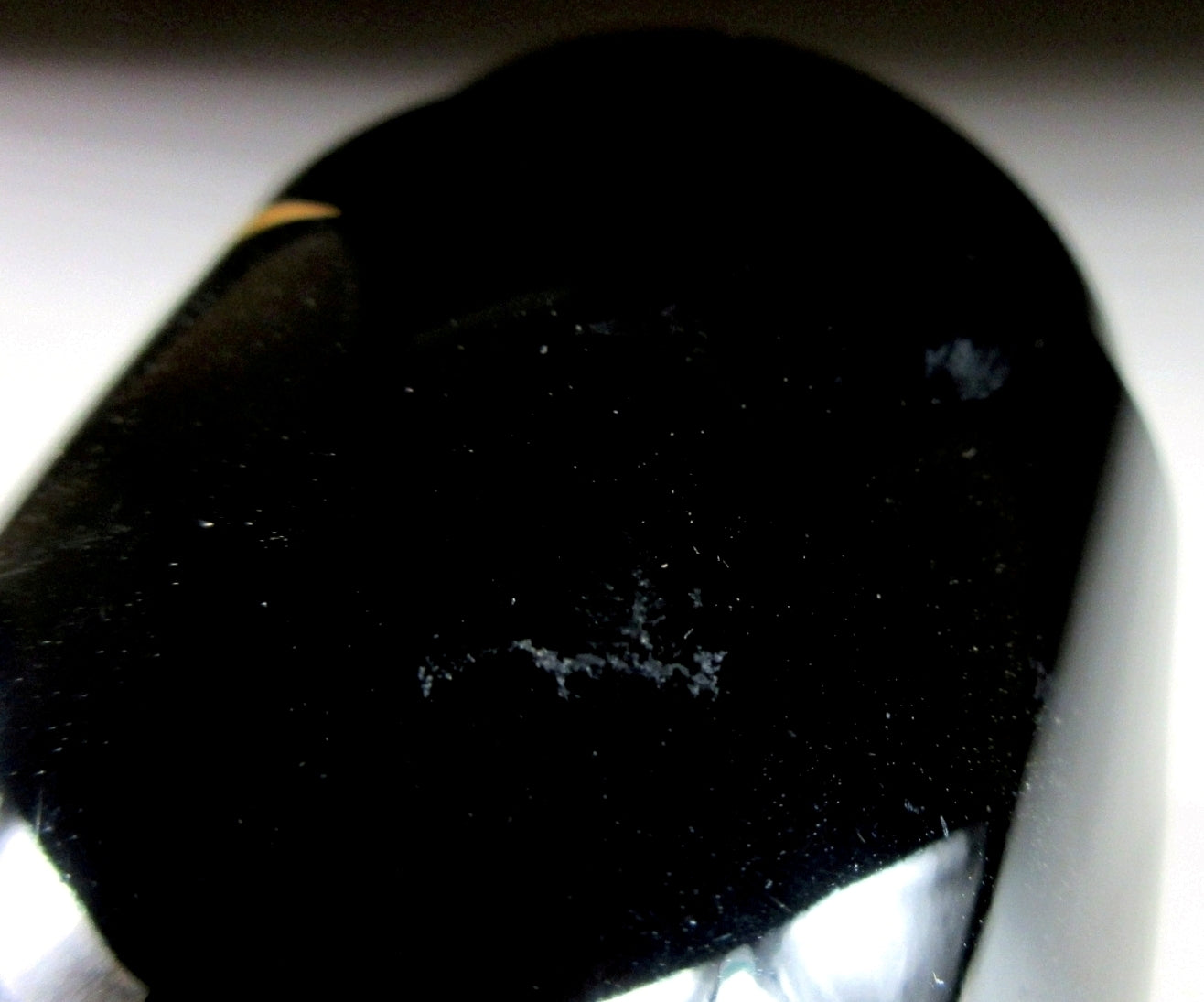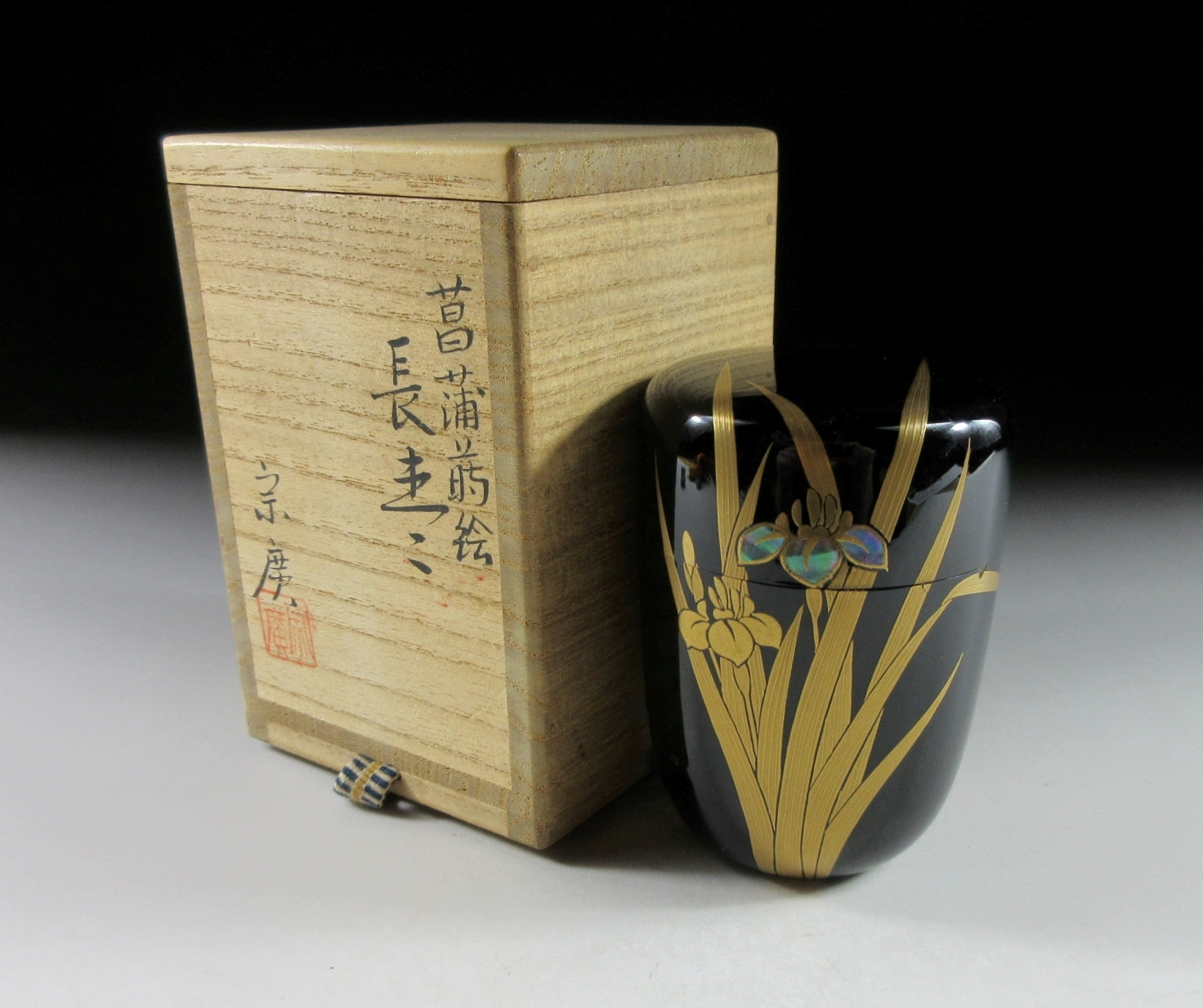Kominka Zakka
Michiba Soko Iris Natsume
Michiba Soko Iris Natsume
Couldn't load pickup availability
*SHIPPING OPTIONS VARY DEPENDING ON THE DESTINATION, PLEASE SCROLL TO THE END OF THIS LISTING FOR MORE DETAILS.
This listing is for a splendid Yamanaka-nuri natsume made around 20 years ago by noted lacquer artist Michiba Soko. It is made of wood and decorated with beautiful irises using mother of pearl and the makie technique. In Japan irises bloom from early to mid-summer and are associated with the annual rainy season. Their elegant blooms can be found in parks and gardens across Japan, and they are a common motif in woodblock prints and other types of artworks. This piece comes with its original signed wooden storage box.
Michiba Soko is a lacquer craftsman from Ishikawa Prefecture and an active member of the Tea Ceremony Study Association. He was born in a lacquerware town supported by the Kaga Hyakumangoku tradition. Hyakumangoku refers to the artisan culture promoted by the ruling Maeda clan. The first daimyo of the Kaga region (Maeda Toshiie) promoted artistry and culture thus enabling Kanazawa to flourish. Because of this, Kanazawa became one of the most culturally renowned domains in all of Japan. Michiba has been active for more than 30 years as a Yamanaka lacquer artisan, and he is a master at reproducing Nakamura Sotetsu pieces. He studied under his father who was also a lacquer artist, and he is also the older brother of Japanese Iron Chef Michiba Rokusaburo. **Fellow sellers, this information was researched by Kominka Zakka and CANNOT be used in your own listings.
Yamanaka nuri refers to lacquerware produced in Ishikawa Prefecture. Echizen craftsmen from Fukui began producing lacquer pieces in this area as far back as the late 1500s. In the 1700s focus shifted towards producing wares for visitors to Yamanaka onsen. This also helped to promote the hot springs, so demand for lacquerware also increased. New techniques for lacquering were developed in the 1800s, and the arrival of the makie technique from Aizu, Kyoto and Kanazawa brought new changes to production in the area. Local craftsmen were also introduced to using a hand turned wood lathe to decorate the surface of their wares. Various patterns were developed and this became the most distinctive characteristic of Yamanaka lacquerware. The area flourished and it became known for its tea ceremony utensils and other fine lacquerware. Today there are over thirty lacquerware studios in the area, including Living National Treasure Kawakita Ryozo. **Fellow sellers, this information was researched by Kominka Zakka and CANNOT be used in your own listings.
Makie refers to a crafting technique in Japan from presumably the Nara period. Craftsmen sprinkle gold or silver metal powder over successive layers of lacquer before it dries. Traditionally pure gold powder, pure gold flakes, and pure silver powder were used to complete motifs on lacquerware. The process of applying gold or silver powder requires both time and skill. At first the craftsman sketches out the design. He or she then adds charcoal powder to the base of the relief, and then a layer of urushi lacquer. Gold or silver powder is sprinkled over the wet lacquer, which acts as an adhesive. The surface is polished and then the process is repeated over and over until a beautiful raised pattern appears.
Sizes
Box: H.10.8cm (4.2”) x 7.4cm (2.9”) x 7.4cm (2.9”)
Natsume: H.7.4cm (2.9”) x Dia.5.6cm (2.2”)
Condition
It’s in good condition aside from a small chip in the lacquer and some scuffing.
THESE ARE SHIPPING ESTIMATES BASED ON THE CURRENT GLOBAL SITUATION
**Germany, France, Greece, Spain, Poland, Austria, Slovakia, Lithuania, Slovenia: NO SHIPPING. Very strict and expensive packaging laws in place and we are not licensed to send products to these countries. We have no plan to register at this time because the process is in some cases very expensive and complicated, plus each country has its own set of regulations and application process.
**USA, UK, Canada, Australia, New Zealand, Switzerland, Norway: Airmail Small Packet (approx. 15-28 days). Combined shipping available up to 2kgs for Airmail Small Packet (please send us a message).
**Asia: Airmail Small Packet (approx. 15-21 days). Combined shipping available up to 2kgs for Airmail Small Packet (please send us a message).
**Central Asia, Middle East, South Africa, Brazil, Mexico: EMS Express 10-15 days.
**Russia: No shipping methods available.
Share
